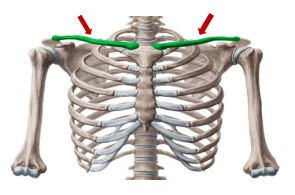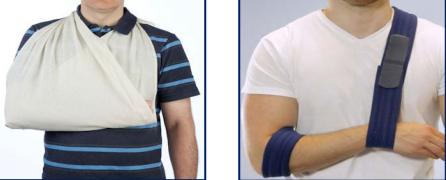Download and print as a PDF (299kB pdf)
On this page
What is a clavicle?
Clavicle is the medical name given to the collarbone.

Clavicle fractures are one of the most common long bone breaks in children; 90% of these are through the middle of the bone and usually result from a fall onto the shoulder tip or an outstretched hand.

What is the treatment for a clavicle fracture?
A simple clavicle fracture in all ages can be treated by wearing a sling or collar and cuff for two weeks. Your child should take the sling off for sleeping and bathing. They should rest the arm in the sling until comfortable (usually for a few days) and can then take the arm out, start moving it and rest it back into the sling for another week or two.

What to expect
Your child may be offered a fracture clinic appointment with orthopaedics if the fracture is more complex. When the fracture is healed you may see or feel a lump over the area that was broken. This is nothing to be concerned about and is simply new bone that has formed around the fracture site; this may be present for up to a year.
What should we do when we get home?
Giving your child paracetamol and ibuprofen for the first 48 hours will help relieve any pain or discomfort they may have. Always follow the manufacturers’ instructions for the correct dose.
We strongly advise no contact sports for 8 to 10 weeks; play & activities should be
restricted.
When should we come back to hospital?
• If your child is still in severe pain despite pain relief medication.
• If your child complains of constant pins and needles in their arm.
• If your child complains of feeling short of breath.
• If your child’s skin is breaking down over the fracture.
Our aim is to provide information that will help you understand your child’s injury and enable the appropriate after-care.
There are lots of useful injury leaflets to download at the Royal Alexandra website
Useful numbers
NHS 24hr advice line
111
Practice Plus (Brighton walk-in Centre)
0333 321 0946
Practice Plus GP
0300 130 3333
7 days a week
8:00 am to 8:00 pm
The information in this leaflet is for guidance purposes only and is in no way intended to replace professional clinical advice by a qualified practitioner.